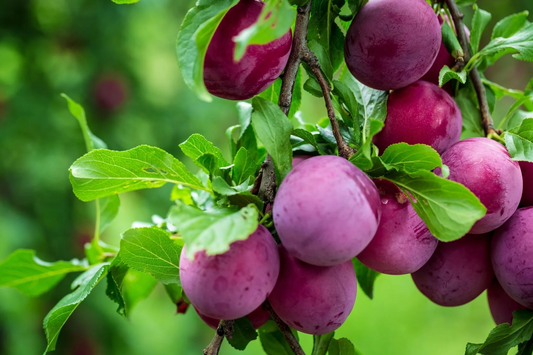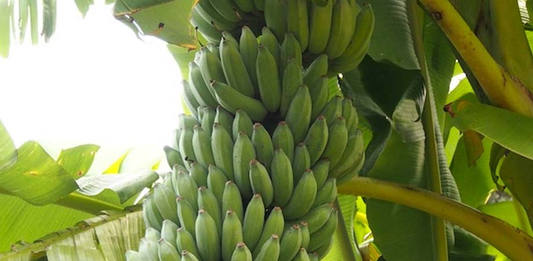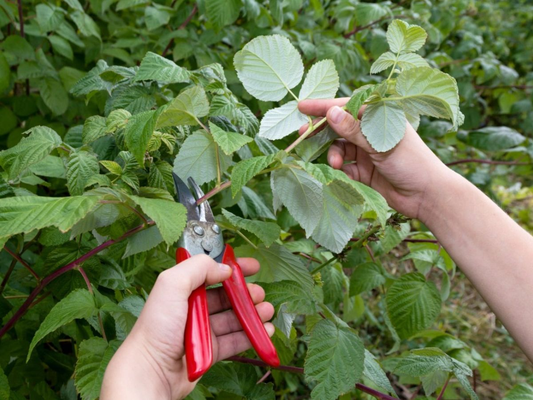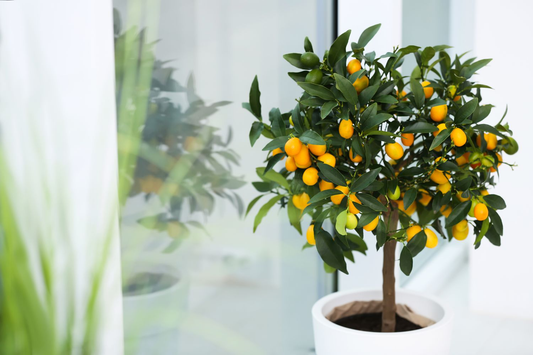Houseplants that Thrive in Low Light
Share
- 1. Introduction
- 2. Understanding Low Light Conditions
- 3. Key Traits of Low Light Houseplants
- 4. Top 10 Houseplants for Low Light
- 5. Care Tips for Low Light Houseplants
- 6. Common Problems and How to Solve Them
- 7. Popular Varieties of Low Light Plants (Pros and Cons)
- 8. Indoor Lighting Solutions for Low Light Plants
- 9. How to Decorate with Low Light Plants
- 10. Low Light Plants vs. Sun-Loving Plants
- 11. FAQ - Frequently Asked Questions
1. Introduction
Low-light houseplants are a fantastic solution for homes that don't receive much natural sunlight, whether due to limited window space or the nature of the surrounding environment. These plants have adapted to thrive in shaded or dimly lit spaces, making them perfect for areas like offices, bedrooms, or bathrooms where natural light is scarce. If you're struggling to keep plants alive in such environments, low-light houseplants are your go-to option for adding greenery to your space.
Here are a few reasons why low-light houseplants are ideal for homes with limited sunlight:
- Adaptability to Dim Environments: These plants thrive in spaces with indirect or filtered light, making them perfect for places where direct sunlight is hard to come by.
- Low Maintenance: Low-light plants generally require less attention than sun-loving varieties. They can tolerate a bit of neglect, such as longer intervals between watering or less frequent fertilizing.
- Air Purification: Many low-light houseplants are known for their air-purifying qualities. They help to remove toxins like formaldehyde and benzene from the air, making your indoor environment healthier.
- Ideal for Busy Lifestyles: If you don’t have time to tend to plants regularly, low-light houseplants are an excellent option because they don’t need constant care to thrive.
In this blog, we will focus on low-light houseplants that not only survive but flourish in environments with minimal sunlight. Whether you're new to plant care or looking to add more greenery to your home, these resilient plants will help you create a tranquil, green oasis with minimal effort.

2. Understanding Low Light Conditions
Understanding what constitutes "low light" is essential for selecting the right houseplants for your home. In terms of houseplant care, light is one of the most critical factors influencing plant growth. Low light conditions don't mean total darkness, but rather spaces that receive little or no direct sunlight. These areas typically have only indirect or filtered light for most of the day, such as rooms with small or north-facing windows, or areas that are shaded by furniture or trees outside.
Here's how low light compares to other light levels:
- Low Light: These areas receive little or no direct sunlight and only filtered, indirect light for a few hours each day. Common spots include corners, offices without windows, or rooms facing away from the sun.
- Medium Light: These areas receive indirect sunlight for several hours a day, usually from an east- or west-facing window. Light is diffused but adequate for most plants.
- Bright Light: Bright light is direct sunlight for a portion of the day, often near a south-facing window or open, sunny spaces. This light level is ideal for plants that need high exposure to sunlight.
To assess lighting in your home or office:
- Observe the amount of natural sunlight: Pay attention to how much sunlight enters your space throughout the day. If direct sunlight is limited, your space is likely low light.
- Use a light meter: If you're unsure, a light meter can help measure the light levels in different areas of your home, giving you a more precise reading.
- Test with a plant: If a plant you place in the area struggles to thrive, it's a sign that the space may be too dark for most plants.
3. Key Traits of Low Light Houseplants
Low-light houseplants have several key traits that allow them to thrive in environments where sunlight is limited. These plants are specially adapted to conserve energy and survive in shaded or dimly lit areas. Understanding these traits will help you select the best plants for your home and care for them properly.
Here are some key features that make low-light houseplants suitable for such environments:
- Slow Growth: Many low-light plants grow more slowly than sun-loving varieties. This slower growth allows them to conserve energy and adapt to low-light conditions over time.
- Ability to Store Water: Some low-light houseplants can store water in their leaves or stems, allowing them to survive longer periods without frequent watering. This is especially beneficial in environments where light and water may be scarce.
- Low Energy Demands: These plants do not require as much energy to photosynthesize as those in bright light. As a result, they are more efficient at converting the little light they receive into energy for growth.
Low-light houseplants also exhibit specific adaptations that help them thrive in dimmer environments:
- Larger Leaves: Many low-light plants have larger leaves that help capture and maximize the amount of light available, even if it's minimal.
- Darker Green Foliage: Darker green leaves indicate higher chlorophyll content, which allows plants to absorb light more efficiently in low-light conditions.
- Longer Stems and Vines: Some low-light plants have long stems or vines that allow them to reach for more light by growing toward a light source, even in shaded spaces.

4. Top 10 Houseplants for Low Light
If you're looking for houseplants that thrive in low-light conditions, these ten plants are ideal choices. Each of these plants has unique features that make them perfect for spaces with limited natural light. Here’s a closer look at the top 10 low-light houseplants:
-
Snake Plant (Sansevieria)
Snake plants are incredibly hardy and can survive in low-light environments. Their upright, sword-like leaves can tolerate neglect, making them perfect for beginners. These plants also purify indoor air, making them both a beautiful and functional addition to your home. -
ZZ Plant (Zamioculcas zamiifolia)
The ZZ plant is known for its waxy, dark green leaves and can survive in very low light conditions. This plant is extremely drought-tolerant and can go for weeks without needing water, making it a low-maintenance option for any room in the house. -
Peace Lily (Spathiphyllum)
Peace lilies thrive in low to medium light and add a touch of elegance with their glossy leaves and white blooms. They are also excellent air purifiers and can help remove toxins from your home. Peace lilies do need a bit more water compared to other low-light plants. -
Pothos (Epipremnum aureum)
Pothos are versatile vines that can adapt to a variety of light conditions, including low light. Their trailing vines make them great for hanging baskets or shelves. Pothos are also easy to propagate, making them a fun and low-maintenance option for plant lovers. -
Cast Iron Plant (Aspidistra elatior)
True to its name, the cast iron plant is virtually indestructible and thrives in areas with little to no sunlight. Its dark green, broad leaves make it an attractive option for spaces that don’t get a lot of natural light. -
Chinese Evergreen (Aglaonema)
Chinese evergreens are known for their striking foliage, which comes in various patterns of silver, green, and red. These plants thrive in low light and require minimal care, making them a perfect choice for beginners and experienced plant owners alike. -
Dracaena (Dracaena spp.)
Dracaenas are another low-maintenance plant that thrives in low light. With long, arching leaves that come in a variety of colors, including green and red, dracaenas can be a stylish addition to your home. They are also air purifiers, helping to improve the quality of your indoor air. -
Spider Plant (Chlorophytum comosum)
The spider plant is easy to grow and thrives in low light conditions. It has long, narrow leaves with white stripes that give it a delicate, cascading appearance. Spider plants are also great at purifying the air, making them a great addition to any room. -
Philodendron (Philodendron spp.)
Philodendrons are adaptable and can survive in low-light environments. With their heart-shaped leaves and trailing vines, they are perfect for hanging baskets or shelves. These plants are also low-maintenance and can go for weeks without needing water. -
English Ivy (Hedera helix)
English ivy is a hardy plant that thrives in low light. Its trailing vines can be trained to grow along trellises or in hanging baskets, creating a lush, green look in any space. It’s also known for its air-purifying properties, making it a great choice for the home.
5. Care Tips for Low Light Houseplants
Caring for low-light houseplants is relatively simple, but it requires attention to key factors such as watering, temperature, humidity, soil, and pruning. By following these care tips, you can keep your plants healthy and thriving in their low-light environments.
Watering: Frequency and Techniques for Preventing Overwatering
Overwatering is one of the most common mistakes made with low-light plants. Since these plants don't grow as quickly in low light, they need less frequent watering. Here's how to avoid overwatering:
- Water when the soil is dry: Always check the soil before watering. Stick your finger into the soil about an inch deep—if it feels dry, it's time to water. If it’s still moist, wait a few more days.
- Use well-draining pots: Make sure your plants are in pots with drainage holes to allow excess water to escape, preventing root rot.
- Water thoroughly: When you water, do so thoroughly but ensure the water drains freely from the bottom of the pot to avoid waterlogging the plant’s roots.
Temperature and Humidity: Ideal Ranges for Most Low-Light Plants
Low-light plants generally prefer a moderate temperature and humidity. To keep your plants healthy:
- Temperature: Most low-light houseplants do best in temperatures between 60°F (15°C) and 75°F (24°C). Avoid placing them near drafts, air conditioners, or heaters, as sudden temperature changes can stress the plant.
- Humidity: While these plants are typically more tolerant of lower humidity levels, they do appreciate a bit more moisture in the air. If your home is dry, consider using a humidifier or placing a shallow tray of water near your plants to increase humidity.
Soil and Fertilization: Best Practices for Keeping These Plants Healthy
Low-light plants often don’t require special soil, but it’s important to use a well-draining mix to avoid root rot. Here are some tips for soil and fertilization:
- Well-draining soil: Choose a soil mix that drains well but retains enough moisture to keep your plant hydrated. A standard houseplant mix or a cactus/succulent mix often works well for most low-light plants.
- Fertilization: Low-light plants generally don’t require heavy feeding. Use a balanced, diluted liquid fertilizer during the growing season (spring and summer) once a month. Avoid fertilizing in the winter when plants are in a dormant phase.
Pruning: How and When to Trim for Optimal Growth
Pruning helps keep your low-light plants healthy, encourages new growth, and maintains their shape. Here's how to prune them effectively:
- Trim dead or yellowing leaves: Regularly remove any dead or yellowing leaves to prevent diseases and maintain the plant’s aesthetic.
- Encourage new growth: If your plant has long, leggy stems, trim them back to encourage bushier, fuller growth. Use sharp scissors or pruning shears to make clean cuts.
- When to prune: The best time to prune most low-light plants is during the growing season, typically in spring or early summer. Avoid heavy pruning in the winter when the plant is dormant.

6. Common Problems and How to Solve Them
Even low-light houseplants can face some common problems if they are not cared for properly. These issues typically arise due to incorrect watering, insufficient light, or improper environmental conditions. Here are some of the most common problems and their solutions:
1. Leggy Growth
Problem: When a plant becomes "leggy," it means it is stretching out with longer-than-usual stems and fewer leaves. This usually happens when the plant is not receiving enough light, causing it to grow tall in search of more light.
- Solution: Move the plant to a brighter location, or increase the light it receives by using grow lights. If the growth is too elongated, prune the plant back to encourage more compact and healthy growth.
- Solution: Rotate the plant every few weeks to ensure all sides receive light evenly, which can prevent uneven growth.
2. Yellowing Leaves
Problem: Yellowing leaves are a common sign of stress in plants. In low-light conditions, this could indicate overwatering, poor drainage, or inadequate light.
- Solution: Check the soil moisture before watering to ensure it isn’t too wet. Allow the soil to dry out between waterings. If the plant’s leaves are turning yellow due to lack of light, consider moving it to a brighter location or supplementing with artificial light.
- Solution: Remove any yellow or dead leaves to prevent disease and allow the plant to focus energy on healthy growth.
3. Stunted Growth or No New Growth
Problem: Low growth or a complete halt in growth can be a sign that the plant is not receiving enough light or nutrients. Low-light plants may slow down during winter, but lack of new growth over a long period is often a sign of other issues.
- Solution: Make sure the plant is in the proper light conditions. If growth is still slow, consider feeding it with a diluted, balanced fertilizer during the growing season to promote healthy growth.
4. Root Rot
Problem: Root rot is caused by overwatering and poor drainage, which can lead to the roots becoming mushy and unhealthy. This is especially problematic in low-light conditions, as the plant doesn’t dry out as quickly.
- Solution: Ensure your plant is in a pot with proper drainage. Water only when the soil is dry to the touch, and always allow the pot to drain freely. If root rot is severe, you may need to repot the plant in fresh soil, cutting away any affected roots.
7. Popular Varieties of Low Light Plants
Many low-light plants are popular for their adaptability and resilience. Below is a table that compares the pros and cons of several common low-light houseplants, which will help you decide which plant is best for your home or office.
| Plant | Pros | Cons |
|---|---|---|
| Snake Plant | Very low maintenance, air purifying | Can tolerate neglect, but overwatering is harmful |
| ZZ Plant | Extremely hardy, tolerates drought | Can be toxic to pets |
| Pothos | Fast-growing, easy to propagate | Can become leggy without enough light |
| Peace Lily | Blooms in low light, improves air quality | Needs frequent watering, sensitive to drafts |
| Chinese Evergreen | Tolerates various conditions, attractive foliage | Can develop yellowing leaves if overwatered |
By reviewing this table, you can easily compare the strengths and weaknesses of each plant variety. Depending on your specific needs, preferences, and environment, you can select the best low-light houseplant that fits your lifestyle.
8. Indoor Lighting Solutions for Low Light Plants
Even though low-light plants are adaptable, providing them with the right lighting is crucial for their growth and overall health. Here are some tips to help optimize the light conditions for your low-light plants:
1. Strategic Placement Near Windows
- Solution: Place your low-light plants near windows that receive indirect or filtered sunlight. North or east-facing windows are ideal as they provide soft, diffused light throughout the day.
- Solution: If your windows are shaded or lack direct sunlight, consider placing plants in corners or areas that still get natural light but not harsh direct rays.
2. Use of Artificial Grow Lights
For homes or offices with limited natural light, artificial grow lights can provide the necessary light spectrum for plant health. These lights are designed to mimic sunlight, ensuring your plants receive the proper wavelengths of light for photosynthesis.
-
Pros of Grow Lights:
- Effective for providing consistent light for low-light plants
- Can be placed in areas with no natural light (e.g., rooms without windows)
- Grow lights come in different types: LED, fluorescent, and incandescent, allowing for customization based on your plant's needs
-
Cons of Grow Lights:
- They can increase electricity costs if used frequently
- Some grow lights may emit heat, which could affect plant health if too close
- Grow lights need to be on a timer to simulate the natural day-night cycle

9. How to Decorate with Low Light Plants
Low-light plants can be a great addition to any room in your home, not just for their aesthetic value but also for their mood-boosting effects. Here are some tips on how to incorporate these plants into your home decor:
1. Placement Around the Home
- Bathrooms: Bathrooms often have low natural light, but the humidity in these spaces can benefit plants like the Peace Lily and Spider Plant. Place them near sinks, shelves, or the bathtub to create a refreshing green atmosphere.
- Offices: Low-light plants like the ZZ Plant or Snake Plant are perfect for office desks or corners, where they can thrive with minimal care. They can also improve air quality and create a relaxing work environment.
- Bedrooms: Add tranquility to your bedroom by placing plants like Cast Iron Plant or Pothos on nightstands or shelves. Their calming presence can enhance your sleep environment, especially in dimly lit spaces.
2. Styling Tips: Combining Plants with Home Decor
- Planter Styles: Choose planters that complement your home’s style—modern ceramic pots, rustic wooden containers, or woven baskets all work well with low-light plants.
- Vertical Gardening: Use plant stands, hanging planters, or wall-mounted shelves to elevate your plants. This not only saves space but adds visual interest to your room.
- Layering: Combine different sizes and types of plants to create a layered, dynamic look. Place taller plants like Chinese Evergreen in the background and smaller ones like Pothos or Snake Plant in the foreground.
3. Creating Ambiance and Improving Mood
- Ambient Lighting: Use soft lighting like table lamps or string lights around your plants to enhance their beauty at night. This helps create a cozy, calming atmosphere.
- Greenery for Wellness: Research shows that indoor plants improve mood and productivity, making them perfect additions to low-light spaces like reading nooks or relaxation corners.
10. Low Light Plants vs. Sun-Loving Plants
While both low-light and sun-loving plants can enhance your home, they have different care requirements. Understanding these differences can help you choose the right plants for your space. Here's a comparison of the two types:
1. Care Requirements
- Low Light Plants: These plants require minimal direct sunlight, making them ideal for spaces with limited light. They often need less frequent watering and can tolerate a variety of environmental conditions.
- Sun-Loving Plants: These plants thrive in bright, direct sunlight and typically require more care. They need more frequent watering and must be placed in spots with ample natural light, often near windows or in sunrooms.
2. Growth Speed, Light Needs, and Adaptability
- Growth Speed: Low-light plants tend to grow slower than sun-loving plants due to their limited access to sunlight for photosynthesis. Sun-loving plants, however, grow faster when given enough light.
- Light Needs: Low-light plants require only indirect or diffused light, while sun-loving plants need bright, direct sunlight to thrive.
- Adaptability: Low-light plants are more adaptable and can survive in environments with fluctuating light conditions. Sun-loving plants are less adaptable and may struggle if they don’t receive enough direct light.
3. Ease of Care in Typical Home Environments
- Low Light Plants: Generally easier to care for in typical home environments, as they can tolerate low light and less frequent watering.
- Sun-Loving Plants: May require more effort to maintain, as they need bright, direct sunlight and a more consistent watering schedule.

11. FAQ - Frequently Asked Questions
Here are some of the most common questions people have about low-light houseplants:
1. Can low light plants survive in complete darkness?
Low-light plants cannot thrive in complete darkness. While they can survive in low light conditions, they still require some form of indirect light to perform photosynthesis. Complete darkness would prevent them from producing energy, leading to their decline over time. It's important to provide at least some diffused or indirect light for low-light plants to thrive.
2. How often should I water low light houseplants?
The frequency of watering low-light plants depends on the specific plant species and the environment. In general, most low-light plants require less frequent watering than sun-loving plants. Here are some general guidelines:
- Check soil moisture: Before watering, make sure the top 1–2 inches of soil are dry.
- Water thoroughly: When you water, make sure to water the plant until water drains out from the bottom of the pot to ensure the entire root system receives moisture.
- Adjust for humidity: If your home is particularly dry, you may need to water more frequently, but always allow the soil to dry between waterings to avoid root rot.
3. Do low light plants need any sunlight at all?
Yes, while low-light plants are adapted to thrive in less light, they still require some light to perform photosynthesis. The term "low light" typically refers to indirect or diffused light. This means they can tolerate lower levels of light, but still need some exposure to natural light, such as from a north-facing window or a bright room with indirect sunlight. Complete darkness would not be sufficient for their growth.
4. Are low light plants safe for pets?
Some low-light plants can be toxic to pets, so it's important to be cautious if you have animals in your home. Here’s a look at some common low-light houseplants and their toxicity to pets:
- ZZ Plant (Zamioculcas zamiifolia): Toxic to pets if ingested, causing nausea and vomiting.
- Peace Lily (Spathiphyllum): Can be toxic to cats and dogs, leading to oral irritation, drooling, and digestive upset.
- Snake Plant (Sansevieria): Generally non-toxic to pets, but it’s still a good idea to prevent your pets from chewing on the leaves.
- Cast Iron Plant (Aspidistra elatior): Non-toxic to pets, making it a safer choice for homes with animals.
Always check the toxicity of a plant before bringing it into a home with pets. If you're unsure, consider placing plants out of reach or opting for non-toxic varieties.
5. Can I grow vegetables or herbs in low light?
Growing vegetables and herbs in low light is challenging, as most edible plants require more light for optimal growth. However, some herbs can tolerate lower light levels, although they might not grow as vigorously. Here are some options:
- Herbs like mint, parsley, and basil: These can grow in low light, but they may need some supplemental light or a grow light to thrive indoors.
- Leafy greens like spinach or lettuce: These can survive in moderate light conditions, but their growth will be slower compared to plants grown in full sun.
- Grow lights: If you are serious about growing herbs or vegetables indoors, consider using grow lights to supplement the natural light and ensure they get the required energy to grow.
While it's possible to grow certain edible plants indoors in low light, they will often require extra attention and supplemental lighting to flourish. Consider experimenting with low-light-tolerant herbs and use grow lights for best results.
Additional Resources
Indoor Gardening Kits for Beginners
Unique Plants for Indoor Decor




